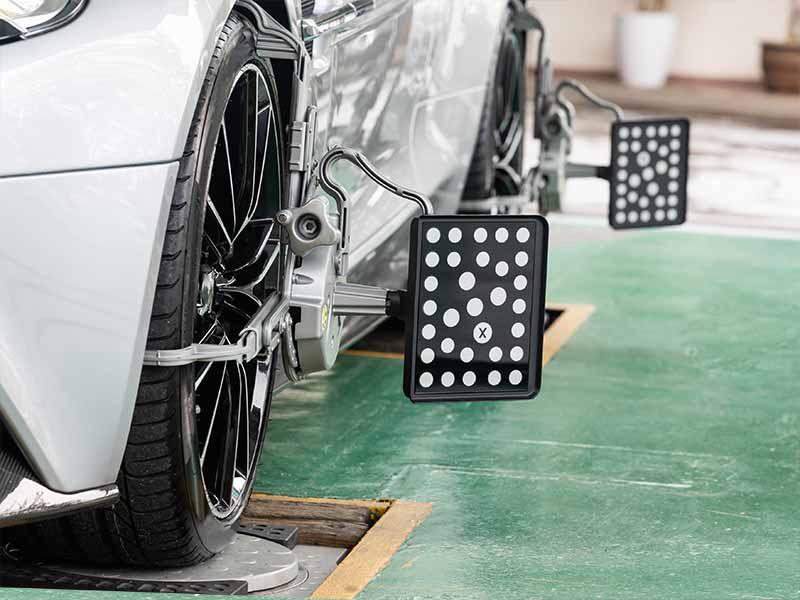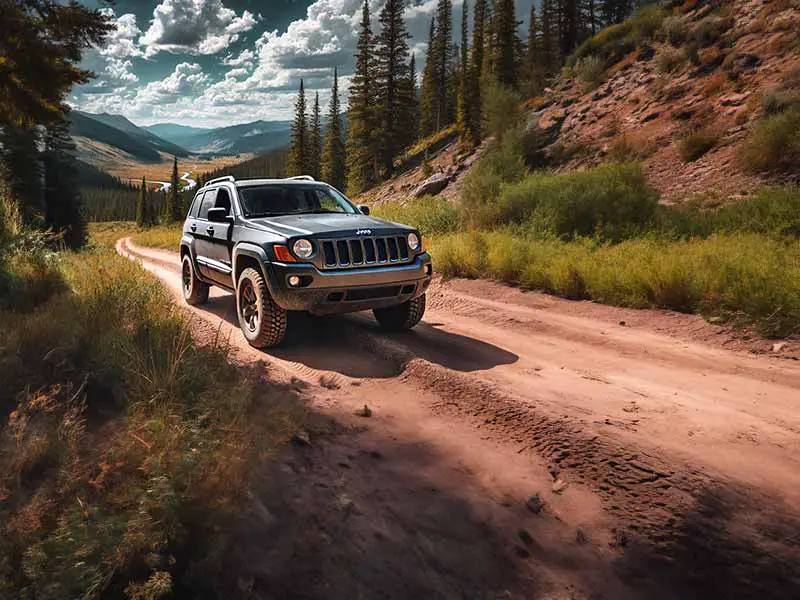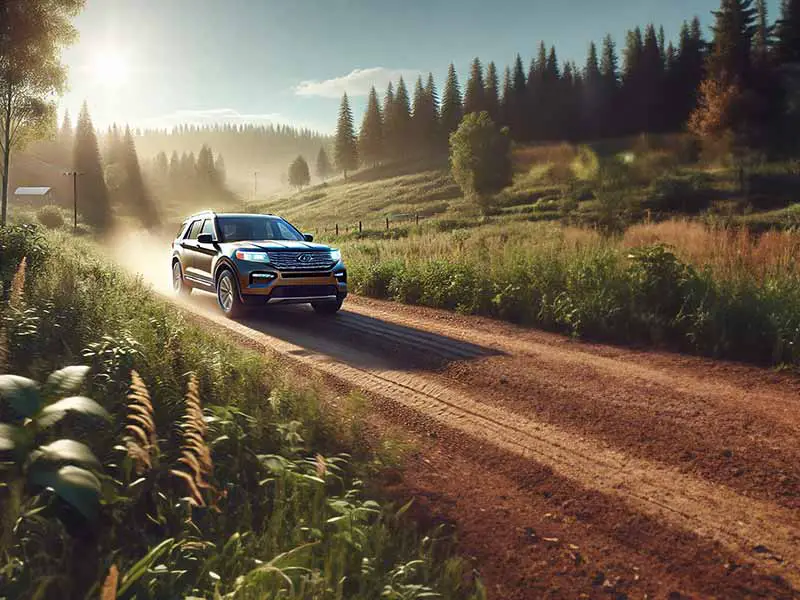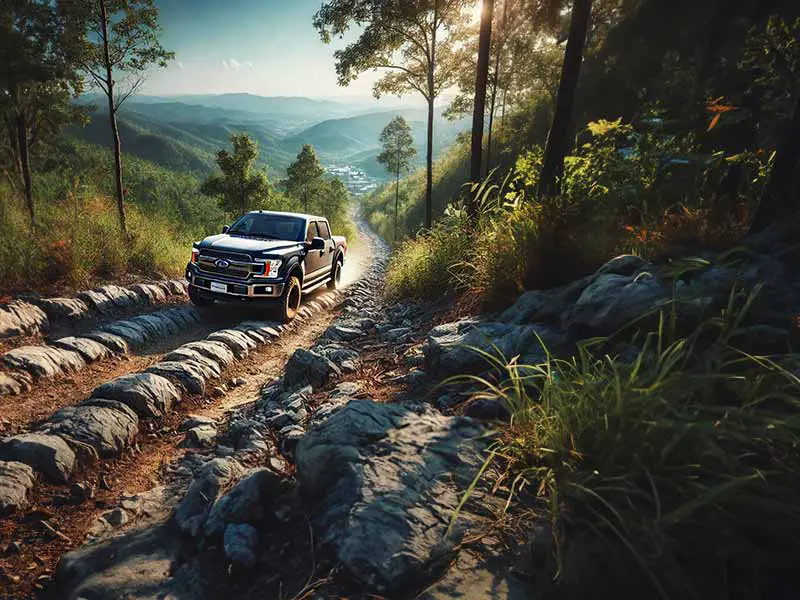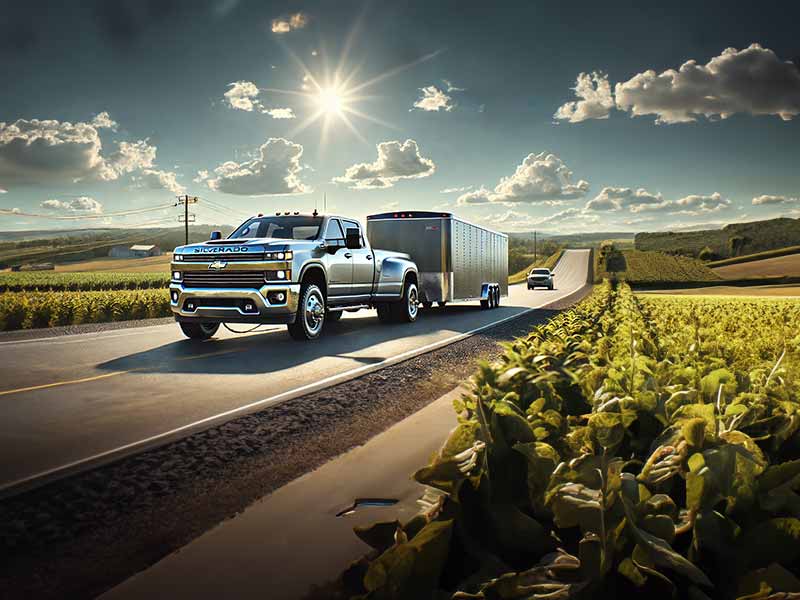You understand the importance of aligning your tires, but can it or should it be done before or after purchasing new tires?
Some tire shops, unfortunately, don’t offer alignment services so you can’t have the new tires mounted and aligned at the same time. This forces you to decide to do it before or afterward.
Alignment Before Or After New Tires
If you’re experiencing uneven tire wear, you should have an alignment performed before you purchase new tires. If you are unable to do so, you should have an alignment performed as soon as possible.
The longer you wait after new tires have been mounted the more unevenly worn your new tires can become. This will shorten tire life and cost you money.
It should be pointed out that you don’t always need to have an alignment performed when you buy new tires.
Steering and suspension parts can take a beating over time, but if your vehicle’s alignment has been checked recently and your vehicle’s tires wear looks good, you may be able to save yourself the time and expense.
While we generally encourage you to have your tires aligned when you buy them, there are times when you can skip it and save yourself some money as well as time sitting in a waiting room at your local mechanic’s shop.
Let’s take a closer look.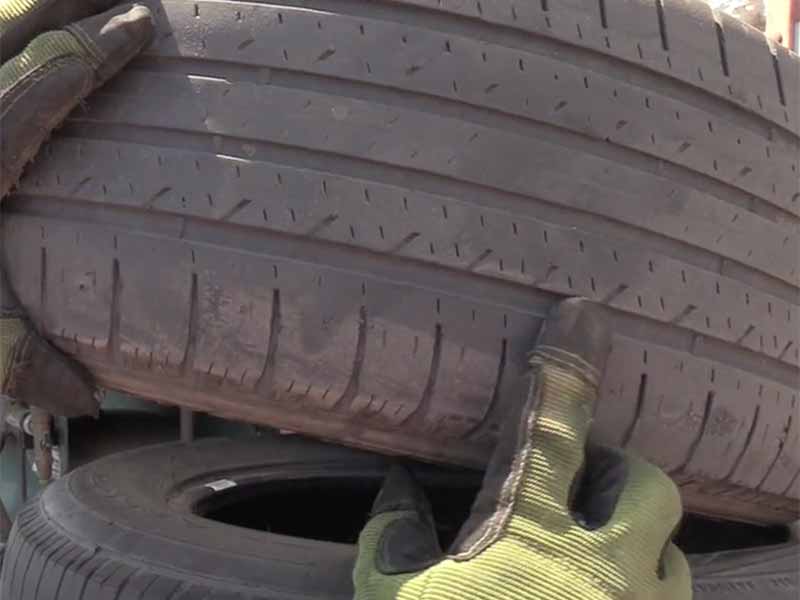
When You Get New Tires Do You Need An Alignment?
An alignment is not required when you buy new tires. We generally recommend that you have your car or truck aligned every 10,000 miles to help ensure that it stays in proper alignment and that your tires wear evenly.
If you’re experiencing poor tire wear we strongly recommend having an alignment performed on your vehicle. Unevenly worn tires are often a result of improper wheel alignment.
If your old tires have been wearing smoothly, lasted a long time, and you’ve had an alignment within the last 10,000 miles, there is no reason you need to have another alignment performed just because you bought new tires.
Your vehicle’s alignment will drift over time due to potholes and curb strikes and does need to be periodically adjusted to ensure the alignment angles are within the vehicle manufacturer’s specification.
Worn suspension parts such as ball joints, steering linkages, shock absorbers, and other suspension and steering parts, can also cause unevenly worn tires. A vehicle alignment will also help identify these problems.
How Soon Should I Get An Alignment After New Tires?
If you have been experiencing unevenly worn tires you should get an alignment as soon as possible if you’ve recently purchased new tires. Uneven wear on your old tires is often a sign of alignment problems. If you don’t fix the root problem the new tires will begin to wear unevenly and their life can be drastically reduced, which is obviously an expensive problem.
Ideally, you should have your vehicle aligned prior to or at the same time you purchase your new tires if you’ve been having uneven tire wear problems. This will prevent poor tire wear due to improper alignment and help you get the most out of your tires.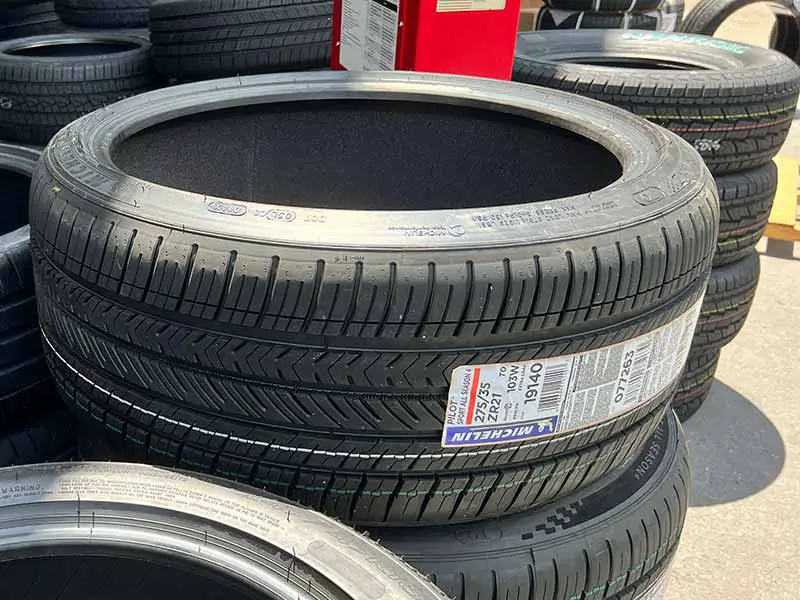
Can I Get An Alignment With Bad Tires?
You can get an alignment with old tires or “bad” tires. Your tires will not have any effect on your alignment. If you have bad tires with uneven wear, you likely need to have an alignment performed. If your tires are worn smoothly and simply need to be replaced due to age or wear, there is no real need to have an alignment performed.
Driving On New Tires Without An Alignment
Driving on new tires without having an alignment performed is an issue if you had poor wear and tire noise before you purchased your new tires. If your old tires had worn smoothly and lasted a long time, there isn’t any need to have an alignment performed.
If you did have wear problems with your old tires, however, new tires will not fix the problem. You need to fix the root cause of the uneven wear so that it doesn’t shorten the life of your new tires. The most common reason for poor tire wear is improper alignment.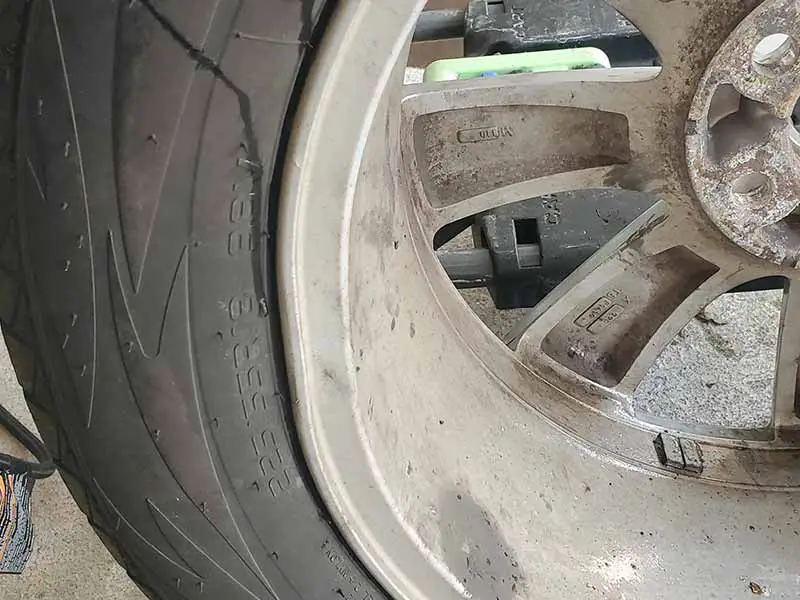
Other causes of poor tire wear can be bent wheels or out-of-balance tires. Also, poor tire maintenance such as not ensuring your tires are properly inflated or failing to perform regular tire rotations.
Tires are expensive and also quite an important component of your car or truck. You want to ensure they are able to grip the road surface well and last as long as possible. Making sure to perform regular good tire maintenance practices will help you get the most out of your tires and save you money.
Failing to address problems that can shorten the life of your tires will obviously cost you money and can reduce tire performance, especially in adverse weather conditions.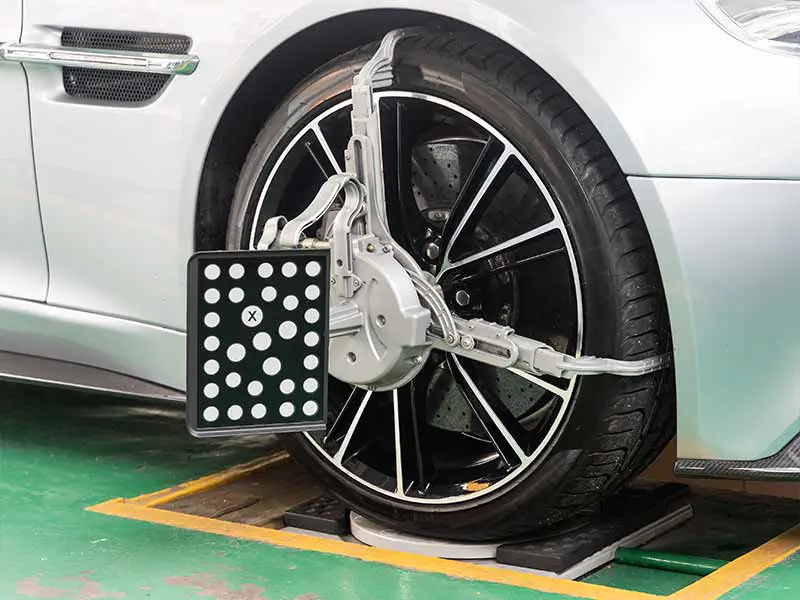
What Is Wheel Alignment
Your vehicle’s alignment is the adjustment of the suspension components to ensure the tires come into proper contact with the road. Tire or wheel alignment adjustments are made by the 3 main tire angles of camber, toe, and caster.
Your tires don’t point perfectly flat and straight on the road surface when in perfect alignment. Every car or truck has slight adjustments to the 3 main adjustment angles that help improve stability and handling. But if these adjustments are too far away from the vehicle manufacturer’s specifications, handling and stability will be reduced as well as the life of your tires due to uneven tire wear.
We tend to not notice the effects of reduced performance as much as we notice the reduced tire life. This is because we often don’t drive at the limits of what our car or truck can do, but we do notice when we have to spend a large amount on new tires.
Camber
Camber is the angle of your wheels and tires when viewed from the front or rear of your vehicle. If the top of your tires are tilted inward toward the middle of your car or truck, this is referred to as negative camber. If the top of your tires are tilted outward, this is referred to as positive camber.
A small amount of negative camber is desirable, especially on the rear axle. Sports cars will have more negative camber to improve handling performance. Unfortunately, as you increase negative camber it will cause the tires to wear more on the inside shoulder. A compromise needs to be made between the amount of negative camber to improve handling yet not shorten the life of your tires too much.
Caster
Caster is the angle of the pivot point of your wheels and tires while steering when viewed from the side of your vehicle. You can kind of think of the pivot point for your steering as a hinge like on a door. Most doors have the hinge perfectly vertical, but this isn’t the case for the steering of your car.
The top of the pivot point is usually tilted backward toward the driver slightly to improve handling and stability. This is called positive caster. If the top of the pivot point were angled more toward the front bumper, it would be negative caster.
Caster has no real effect on tire wear but is important for the handling of your vehicle.
Toe
Toe is the angle of your tires when viewed from the top of your car or truck. If the front of your tires are tilted inward toward the centerline of your vehicle, this is called toe-in. If the front of your tires are tilted outward this would be called toe out.
A bit of toe-in is desirable to improve handling and stability, but too much can cause your tires to wear quite poorly. Essentially your tires will drag slightly as you drive down the road. The more toe angle the more the tire will drag and wear.
Resources
Below are some links you may find helpful when learning about tires
Final Thoughts
Alignment is important to check every 10,000 miles or when you’re experiencing unusual tire wear problems. If all is well, you may not need to have it done when you buy new tires. But ideally, it should be performed before or at the same time as the purchase of your new tires. If you have to align your wheels and tires afterward you should try to have it done as soon as possible.
If you don’t have any wear problems and your tire life has been good, you may not need to worry about having an alignment performed when you buy a new set of tires. An alignment will never hurt, but you can save some money if you’ve had one performed within the last 10,000 miles and you aren’t having any problems that would require an alignment.
Good luck and happy motoring.
